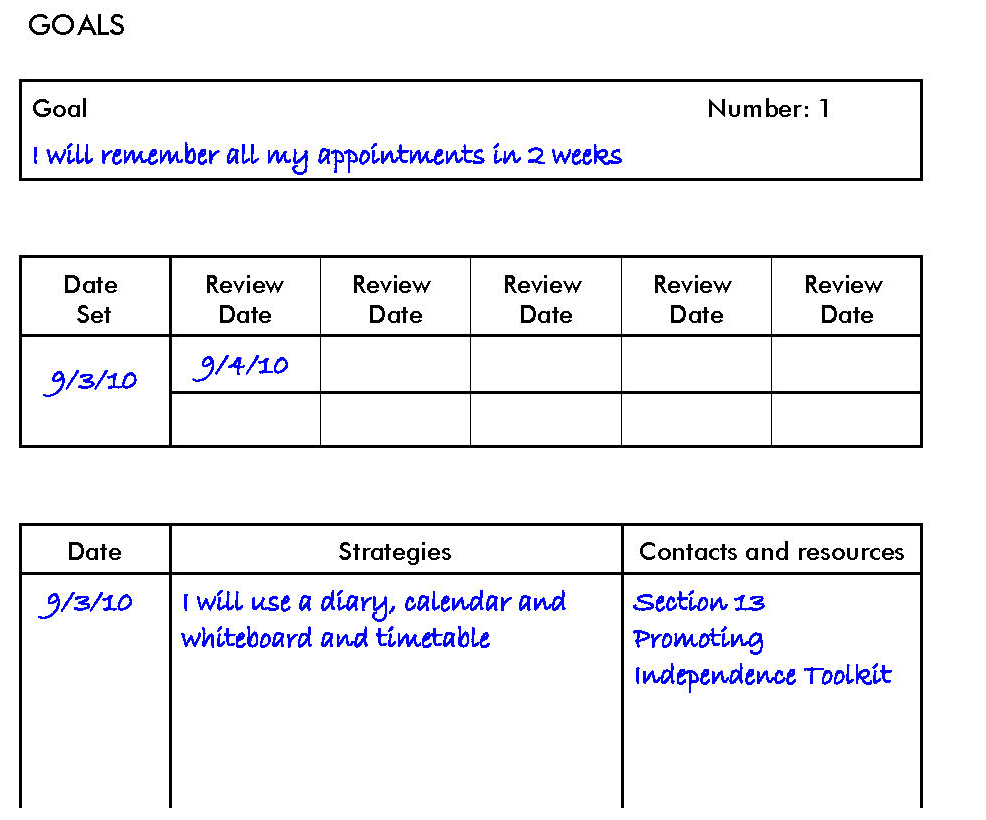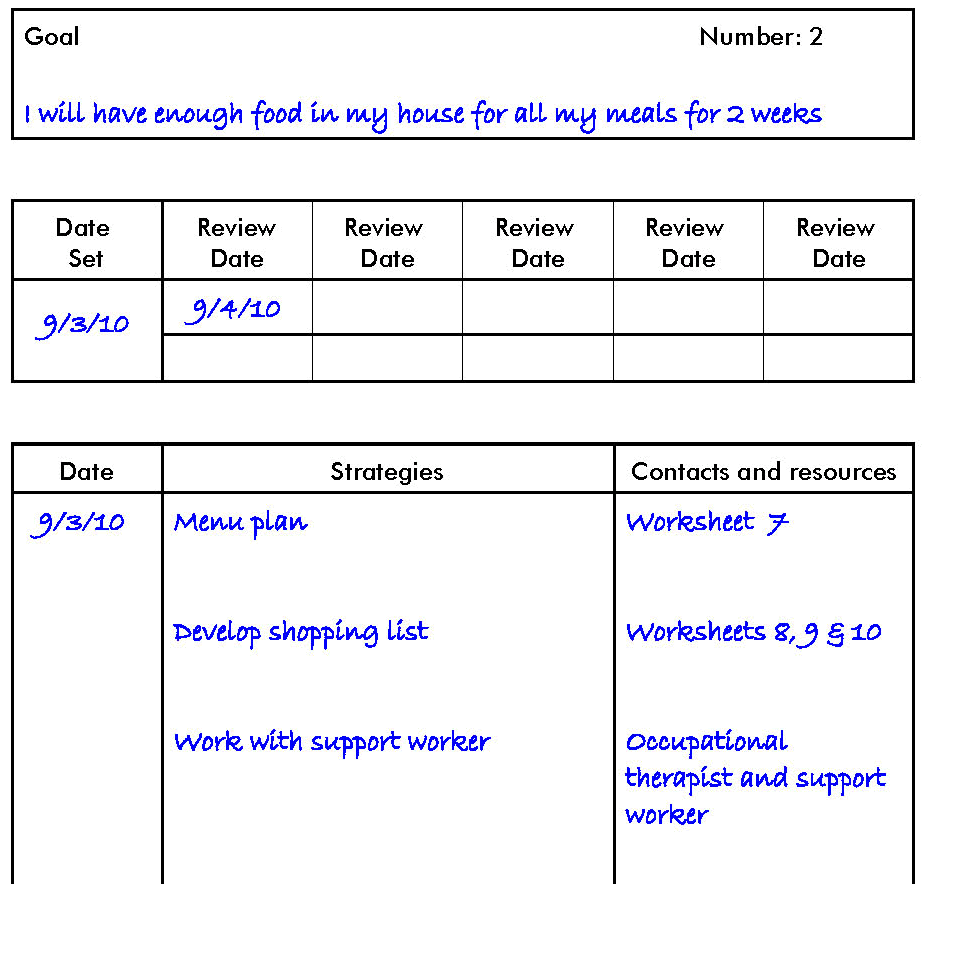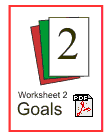- TOOL KITS
- A. The NEXT Step
- B. Promoting Independence
- C. Phone Apps
- D. Return to Work
- E. Motivational Interviewing
- F. Paediatric Brain Injury Rehabilitation Resources
- a) Introduction
- 0. Introduction
- 1. Working together promoting independence
- 2 . Using this kit
- b) Issues, goals, action
- 3. Identifying issues W
- 4. Setting goals W
- 5. Making goals happen W
- 6. Monitoring progress W
- c) Strategies Myself and my relationships
- 7. My behaviour's changed W
- 8. Thinking
- 9. Relationships W
- 10.Conversations
- Managing memory, money and time
- 11. Remembering information and messages
- 12. Finances and handling money W
- 13. Managing time W
- Household tasks
- 14. Food and shopping W
- 15. Food and meals W
- 16. House keeping
- 17. Laundry
- Getting around
- 18. Public transport W
- 19. Accessing the community
- Life tasks
- 20. Self care
- 21. Fitness
- 22. Leisure
- 23. Employment
- 24. Continue learning
- 25. Health and well-being
- Emergencies
- 26. Emergencies
4. Setting goals
Once you have identified issues and areas to work on, the next step is writing goals
You need to be able to:
Write goals
Complete a goals Worksheet
What are goals?
Once you have identified issues and areas to work on, the next step is writing goals. Goals can best be described as something you want to achieve in a certain amount of time.
You can have both short and long-term goals.
An example of a short-term goal is:
"I will take the dog for a walk twice a week within two weeks time 100% of the time".
An example of a long-term goal is: "I will cook an evening meal four times each week in four months time 90% of the time" or "I will live by myself in the community in 6 months time"
You may be working on two or three short-term goals and one or two long-term goals at the same time.
Goals don't have to be related to each other. For example, one goal may be wanting to improve your shopping skills, whereas another goal may be saving for a holiday.
You may find that you have lots of different goals you would like to work on. No one can work on all of their goals at once. You have to work on only a few goals at a time. That's why they need to be prioritised.
Gemma's experience
When Gemma came to the Brain Injury Rehabilitation Unit she knew she was having lots of problems. Gemma wrote down the areas she was having difficulty with. She found that by writing the issues down she didn't feel overwhelmed. By writing them down, Gemma felt she could do something about them. Gemma wrote them on her Issues Worksheet. She then prioritised them. Gemma found that needing money, food, paying bills and remembering appointments and where she put things were the urgent things she had to work on. Gemma's goal sheets follow. Notice she has written MARS goals and each one is on a different sheet. The strategies and resources Gemma thinks she will use are written under the appropriate column. Gemma filled in these parts of her goal sheets as she went through Section B.
How do I write goals?
Goals are statements of what you want to achieve.
To be useful goals need to be specific enough so that you will know whether or not you have achieved them.
When writing goals some questions you can keep in mind are:
M = Is it Measurable?
This means you can tell when you have achieved your goal. It can also refer to the timeframe you give yourself to achieve your goals.
A = Is it Agreed Upon?
This means it is something you want to work on. Also, if it involves others, then they agree to work on it also.
R = Is it about a result I want to archieve?
Refers to what you are going to achieve. The outcome of your efforts.
S = Is it a Specific step on the way to what I want to achieve?.
Specific to you and the activity you want to do. These are your M.A.R.S. steps!
These questions are known as M.A.R.S.
This will make your goals measurable and meaningful! It will be easy to see your improvements and goals achieved!
Some examples of M.A.R.S. goals are:
I will remember all my appointments in 2 weeks
I will have enough food in my house for all my needs for 2 weeks.
I will keep track of when my bills are due and pay them on time within two weeks.
I will identify places to keep things in my house so I don't lose them, in one month.
Practical exercise: Completing the Goals Worksheet
On Worksheet 1 you identified issues you wanted to work on. You then put them in order of priority.
Using this worksheet you can now identify the goals you want to work on. For example, your number 1 priority may have been to eat breakfast daily: This then becomes the first goal you choose to work on. Look at how you coded the issues.
Helpful hints
When looking at the Issue Sheet ask yourself:
- Can I do this on my own or will I need support from others?
- How long do I think it will take?
- How will I know when I have achieved my goal?
In the beginning, working these things out is the most difficult thing to do. It can seem like a waste of time, but once you have done this you get direction. You know what you are working towards, instead of trying to work on everything at once.
Worksheet 2
Worksheet 2 is the Goal Sheet. You will have more than one goal sheet. You use a different goal sheet for each goal. You write your goals from your prioritised list of issues, Worksheet 1. So make sure you have your Issue Sheet, Worksheet 1 close by.
A. At the top of the goal sheet you write down the date you set the goal.
B. Then you write your goal at the top of the page. Make sure you have written your goal so that it is a M.A.R.S. goal.
C. You then identify a review date. You write this in the box beside the" date set" box. A review date can range from four weeks to two months. Don't wait too long as it is important to know when things are and aren't working.
D. Complete columns 1, 2, and 3
Column 1 is the date. This date tells you your progress toward achieving the goal on that date.
Column 2 is where you write the strategy you are using to achieve this goal.
Column 3 identifies any person or resource you can use to enable you to achieve your goal. It may be important to get some feedback about your goals. Talk to others and get them to help you if you are finding it difficult. It is easy to underestimate how long it will take. It is sometimes difficult to identify what strategies to use to achieve them and how you will know you have achieved them.
Here are two examples:



